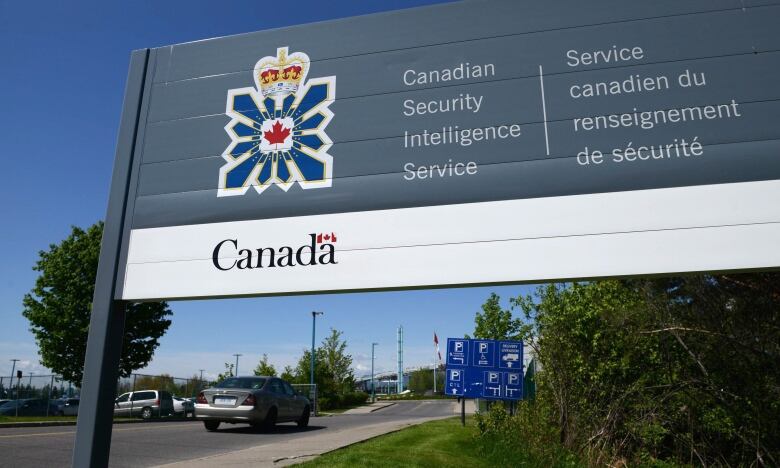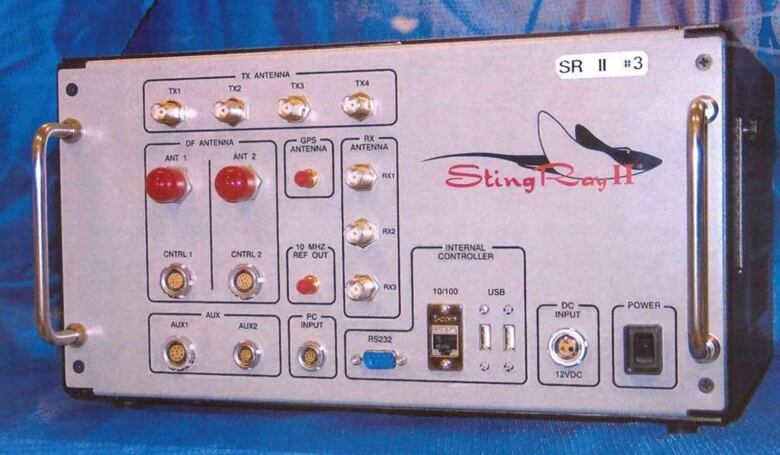'Shady, secretive system': Public Safety green-lit RCMP, CSIS spying devices, documents reveal
Government officials refuse to say exactly what interception devices are being approved in Canada

Public Safety Canada has repeatedly approved CSIS and the RCMP's use of devices to spy on Canadians' communications, documents obtained by CBC News reveal.
Canadians have been kept largely in the dark about police and intelligence agencies' surveillance capabilities. But recent revelations in a Montreal court case that police are using electronic tools to scoop up mobile phone signals have prompted some experts to call for greater transparency in the approval and use of technologies that potentially violate privacy.
The new documents reveal Public Safety Canada approved requests from the RCMP, Canadian Security Intelligence Service and the Defence Department granting more than a dozen licences to an unnamed company (or companies) for the purpose of possessing, manufacturing or selling devices "used primarily for the interception of communications."
- Cellphone monitoring device use should be transparent and limited, researchers say
- Goodale hopes new spy oversight committee will be 'spontaneous' with reports
The documents, which are heavily redacted and don't identify the manufacturersor the devices and their capabilities,were shared with CBC News by Ottawa-based investigative researcher Ken Rubin.
"It's a part of the puzzle," Rubin said. "There are too many questions there. All I've uncovered is a link to how this rather shady, secretive system works, and there's no public understanding of it."
Government won't identify devices
The one- and two-year licences were issued beginning in 2015, and in some cases, they extend until 2018. One was granted to CSIS retroactively.
They were granted under Section 191 of the Criminal Code, which says technology for the surreptitious interception of private communications is illegal, unless permission to use such technology is granted by the public safety minister.
The RCMP wouldn't disclosewhat the licences are for.
"We generally do not comment on specific investigative methods, tools and techniques outside of court," said spokeswoman Cpl. Annie Delisle.
Public Safety Canada spokesman Jean-Philippe Levert also declined to identify the devices.
"Disclosing details such as the specific types of equipment used to conduct investigations may hinder these agencies' effectiveness and their ability to carry out their mandates," he said.

Delisle said the RCMP has been appointed to review all licence applications made under Section 191, including doing background checks on the individuals or companies that apply. If they pass the RCMP's vetting process, Public Safety officials are then asked to sign off on the licences.
Some, called "special licences,"last for two years. The RCMP said this type allows acompany to possess the equipment, which is otherwise illegal to own. The licensee can then demonstrate the equipment to law enforcement and government agencies.
Others are just called "licences"and last for one year. The RCMP said this allows acompany to sell the equipment to the government agency that sponsored its application.
While Public Safety and the RCMP won't identify the devices, Rubin says one possibility is what's known as a StingRay, or IMSI catcher. The device can identify and track a person based on their mobile device's specific ID and intercept communications to and from the device.
- Police secrecy onStingRaycellphonesurveillance device challenged
- AreStingRaycellphonesurveillance systems used by Vancouver police?
- Edmonton police backtrack onStringRaysurveillance statement
IMSI catchers have come under heavy scrutiny for the lack of transparency around their use. Canadian police agencies, including the RCMP and the Vancouver and Toronto police forces, have fought in court to withhold saying whether they use them.
But RCMP testimony and court records from a Montreal case showthe RCMP does use the technology in investigations across the country. In that court case, it was revealed that police had sought a judge's authorization to use the device
No public record
There is no public record or clear policy on how police use technology for surveillance purposes, something privacy advocates say is a problem.
"It could be any kind of device it certainly doesn't have to be the StingRay but who knows what this device is, and that's part of the problem," Rubin said.

Tamir Israel, a privacy lawyer who co-authored a recent report on IMSI catchers, said there are lots of invasive electronic devices out there that police can use.
- Former CSIS head says Canada should have its own cyber-warriors
- MPs, senators to oversee security, intelligence agencies under new Liberal bill
"If there was some way to get them [law enforcement agencies and the government] to be more proactive about just explaining to the public what the tools are, we can have a discussion up front," Israel said.
Especially since the government introduced legislation this summer to create a spy watchdog committee, and Public Safety Minister Ralph Goodale said he wants to hear from Canadians on the topic.
But without more transparency, bothRubin and Israel say that's a challenge.
"We're having these consultations, but we don't know what we're consulting about because we don't know about what the tools are that are being used," Israel said.
Exemptions for public officials
Adding to the confusion is the fact any device that interferes with radio communications, such as an IMSI catcher, requires a company or agency to get authorization from Innovation, Sciences and Economic Development Canada, previously known as Industry Canada.

So theoretically, according to Israel, anyone using such a device would need both a licence from Public Safety and authorization from Innovation Canada.
But that isn't the case for the RCMP and other public officials.
Innovation Canada confirmed that it would have to authorize a person or company to own and use a device like an IMSI catcher. But the department says it hasn't authorized their use in Canada.
However, a spokesperson did say that under Section 54 of the Radiocommunications Regulations, it doesn'tactually have to be notified if a public official, peace officer, prosecutor, or officer of the court uses such a device for the investigation of an alleged crime, or for the purposes of international affairs, national defence or security.
That means Innovation Canada only regulates their use for the rest of us, which may explain how the RCMP has been able to use the device in its investigations.
- Police secrecy on StingRay cellphone surveillance device challenged
- Canada's electronic spy service to take more prominent role in ISIS fight
Rubin said that even if the government's system of issuing licences for surveillance technology isn't robust, these documents show that it does, indeed, exist.
"And now that we know it exists, how are you going to explain this to the public?"
View the documents released under Access to Information below:












_(720p).jpg)


 OFFICIAL HD MUSIC VIDEO.jpg)
.jpg)



























































































